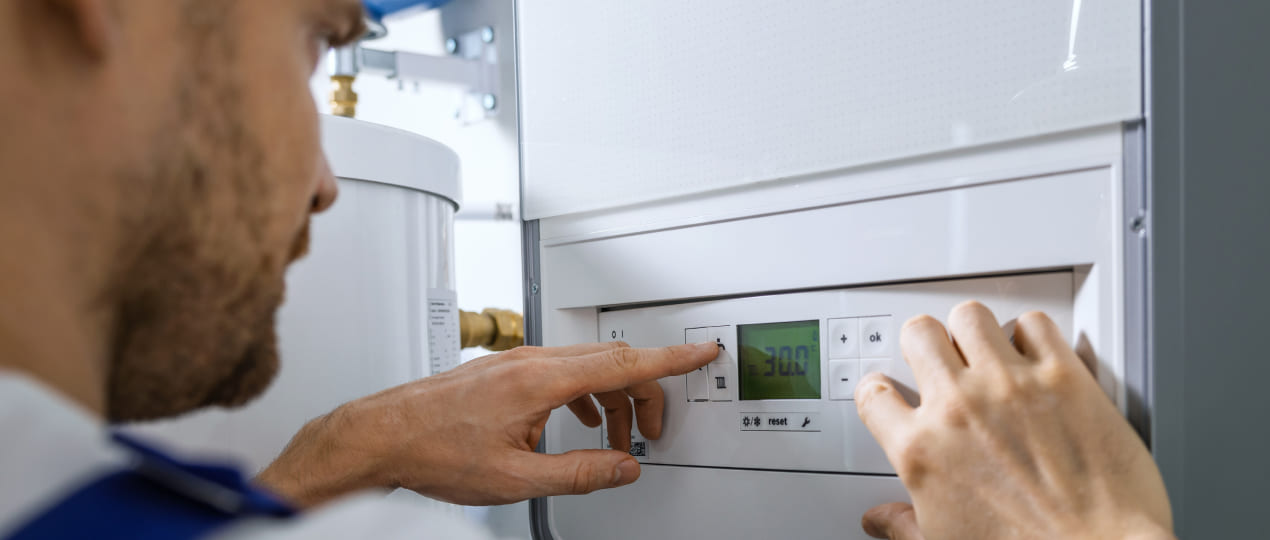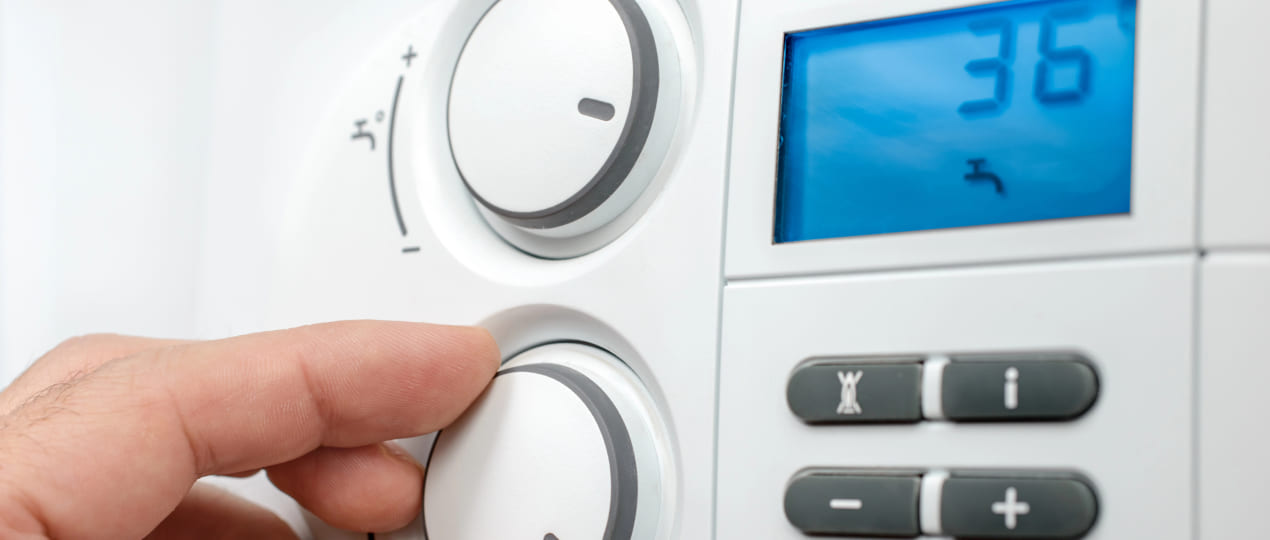
As the backbone of a well-functioning heating system, the boiler plays an essential role in ensuring that your home stays warm during the colder months. But what if your heating system isn’t performing as expected? One of the often-overlooked yet crucial aspects of a well-maintained boiler system is the calibration of its thermostat. Proper calibration helps ensure your system works efficiently, delivering just the right amount of heat to maintain comfort without wasting energy.
In this article, we’ll delve into the details of calibration, explore why it matters, and provide you with a comprehensive guide on how to calibrate your boiler thermostat properly. We’ll walk you through the process and highlight important factors that could influence calibration accuracy, so you can optimize your heating system for better performance.
What is a thermostat calibration?
Thermostat calibration refers to the process of adjusting and aligning the thermostat’s readings with the actual temperature in the room or space it’s monitoring. Over time, thermostats can drift from their factory settings due to wear, environmental changes, or simple aging. When this happens, your thermostat may no longer provide an accurate reading of the room’s temperature. As a result, your heating system could overheat or underheat your space, leading to discomfort or wasted energy.
Calibration ensures that your thermostat accurately reflects the temperature in your living area. The goal is to make sure that the thermostat is correctly reading the ambient temperature and, in turn, regulating the boiler’s heating output accordingly.
The process typically involves comparing the thermostat’s reading to an accurate thermometer and adjusting it so that both are in sync. Depending on the model, this can often be done with simple tools or settings.
Why is it important to calibrate the boiler thermostat?
Ensuring that your thermostat is properly calibrated is important for several reasons, including comfort, efficiency, and cost savings. Let’s look at some of the key reasons why you should calibrate your boiler thermostat regularly:
Enhanced comfort
A poorly calibrated thermostat may lead to inconsistent heating. For instance, if the thermostat is reading a temperature that’s lower than the actual room temperature, your boiler may continue to run longer than necessary, making your home too warm. On the other hand, if it’s reading too high, your boiler may not run long enough to adequately heat your space. This results in an uncomfortable environment for you and your family. Proper calibration ensures that your home remains consistently comfortable by maintaining the right temperature.
Energy efficiency
If your thermostat is out of calibration, it could cause the boiler to overheat or work harder than needed, consuming excess energy. This can lead to an increase in your utility bills, as your heating system is either running too much or not running long enough to reach the desired temperature. By calibrating your thermostat, you can make sure that your system uses energy only when necessary, saving both energy and money in the long run.
Longevity of your boiler
A thermostat that is not functioning properly can lead to excessive wear and tear on your boiler. When the boiler is constantly turning on and off unnecessarily or running longer than needed, the stress on the system increases, potentially shortening its lifespan. Regular calibration helps ensure that your boiler operates at its most efficient capacity, minimizing unnecessary strain on the components and extending the lifespan of your system.
Prevention of overheating and underheating
A common problem associated with out-of-calibration thermostats is the failure to properly regulate temperature. Overheating can make your home too warm and lead to wasted energy. On the flip side, underheating can cause discomfort, especially during the winter months. Calibration ensures your thermostat provides accurate readings, keeping your home at a comfortable temperature without fluctuations that may lead to overuse of your heating system.

How to calibrate your boiler thermostat?
Now that you understand the importance of calibration, let’s dive into how to calibrate your thermostat step by step. While the process can vary depending on the make and model of your unit, the general procedure remains fairly consistent.
- Turn off the boiler Before you start any calibration work, turn off the boiler and make sure it is completely powered down. This is important to avoid any electrical mishaps while adjusting the thermostat.
- Remove the thermostat cover (if applicable) If you have a traditional mechanical thermostat, you may need to remove the cover to access the adjustment dial or screw. For digital thermostats, you may need to access the settings menu through the display.
- Check the room temperature To calibrate the thermostat, you’ll need to know the accurate room temperature. Use a reliable thermometer (digital or mercury) to take an accurate reading of the current room temperature. Place it close to the thermostat to compare the readings.
- Adjust the thermostat If the thermostat reading differs from the thermometer reading, you’ll need to adjust it. For mechanical models, this usually involves turning a small screw or dial. Digital thermostats typically have a calibration option in their settings menu. Adjust it until the reading matches the room temperature.
- Test the system Once the thermostat is calibrated, turn the boiler back on and set the thermostat to your desired temperature. Allow the system to run for a while and check if it reaches the desired temperature without unnecessary cycling or delays. If the system doesn’t function as expected, you may need to repeat the calibration process or inspect the thermostat for other issues.
If you’re unsure about calibrating your thermostat or need further assistance with your boiler system, don’t hesitate to contact our trusted HVAC professionals.
We’ll provide a comprehensive service that quickly and professionally solves your HVAC problems.
Order the best specialist in Canada Now (866) 545-6460
Factors affecting calibration accuracy
While thermostat calibration is an essential step in maintaining a properly functioning heating system, there are several factors that could affect the accuracy of the calibration:
- Location of the thermostat Where your thermostat is placed can significantly impact its accuracy. It should be located in a central area of the home, away from drafts, direct sunlight, or heat-producing appliances like ovens and refrigerators. Poor placement can cause the thermostat to read inaccurately, even if it is properly calibrated.
- Thermostat type Mechanical thermostats (which use a metal coil or bimetallic strip) can lose their calibration over time, especially due to wear. Digital thermostats, on the other hand, often have more precise calibration mechanisms but may still need recalibration after extended use or if the sensor becomes damaged.
- Environmental factors Changes in the environment can affect your thermostat’s performance. For instance, extreme changes in humidity or temperature can cause expansion or contraction in the internal components, leading to inaccuracies in readings.
- System malfunctions Sometimes, calibration issues are not related to the thermostat itself but to the boiler or heating system. For example, faulty wiring or malfunctioning sensors can cause inaccurate readings. In such cases, recalibrating the thermostat alone won’t solve the problem – you may need to address the underlying issues with the heating system.
Conclusion: calibrating your boiler thermostat
Thermostat calibration is a crucial maintenance task that ensures your boiler operates efficiently, keeps your home comfortable, and saves you money on energy bills. Whether you’re handling it yourself or calling in a professional, it’s important to regularly check and calibrate your thermostat to avoid unnecessary energy waste and ensure the optimal performance of your heating system.
By following the steps outlined above and considering the factors that could impact calibration accuracy, you can keep your thermostat running like new, helping you maintain a warm, energy-efficient home for years to come.
REFERENCES
1. Arı, Y., & Kaçar, F. (2024). Developing an Algorithm to Improve the Temperature Accuracy of Room Thermostats. MAPAN, 1-10. https://link.springer.com/article/10.1007/s12647-024-00783-w
2. Vallianos, C., Candanedo, J., & Athienitis, A. (2023). Application of a large smart thermostat dataset for model calibration and Model Predictive Control implementation in the residential sector. Energy, 278, 127839. https://www.sciencedirect.com/science/article/abs/pii/S0360544223012331
